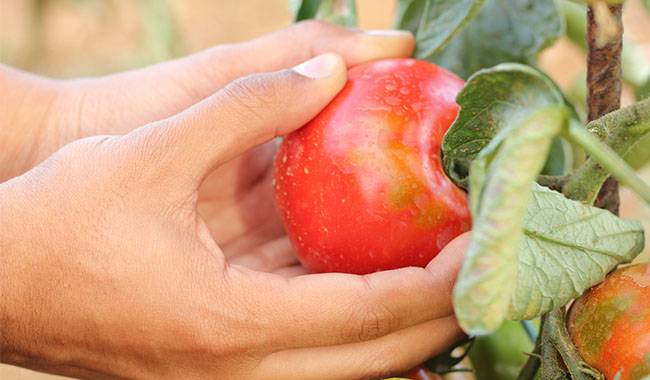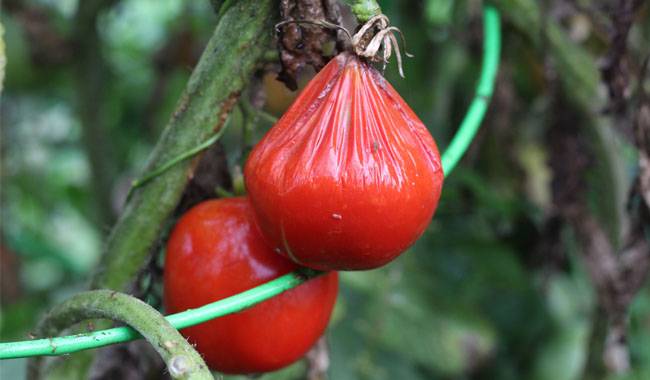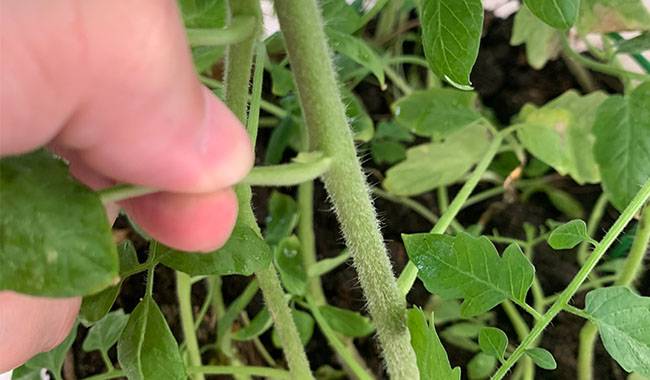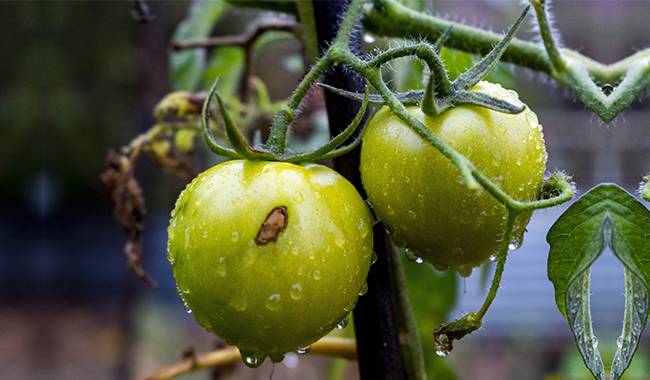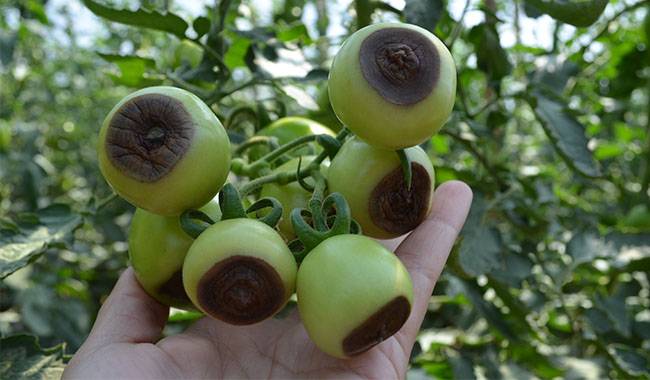
Tomatoes are the well-known plants, it present in every vegetable garden and sometimes they are given an important status. Tomatoes can be grown in both, the open field and greenhouse.
In some months, we can get a wonderful and just right crop of tomatoes. But others months, almost the fruits on the branches suddenly start rot. It seems we do everything right for planting, but still there’s some problem which is not eliminated.
Why does tomatoes rot and what sould we do about it? We will try to understand today.
WHAT IS THE INFESTATION OF TOMATOES ROT?
It is clear that we are dealing with Tomatoes rot and that Tomatoes rot is not only a current season infestation: the spores overwinter well in the soil and can manifest themselves next year and Tomatoes rot on the fruit can reappear, possibly doubling in intensity.
In general, tomatoes rot is caused by Phytophthora, Alternaria, root tip rot, and various other bacteria.
In most cases, these diseases attack the tomato fruit, but there are exceptions where the disease affects the leaves, resulting in a double whammy inhibition of the photosynthesis process, and sometimes the disease reaches the stem of the plant, which then dies completely after a few days.
Most often, the fungus enters accidentally from the infected soil and can spread through the air, as well as during greening operations in bushes, when the gardener does not treat the working tools with alcohol and moves from a sick plant to a healthy one, thus infecting it.
It is clear that plants growing on poor soil, lacking water or certain nutrients in the soil, that is, are more susceptible to disease than other plants due to their low immunity.
In particular, the fruit Tomatoes rot affects plants growing on soils severely deficient in elements such as calcium and potassium, where crop rotations are not observed or where the basic rules of agricultural engineering are violated.
PHYTOPHTHORA IS THE MAIN CAUSE OF TOMATOES ROT IN OPEN TOMATOES
The main cause is phytophthora. Initially, small, sometimes undetectable black spots appear on the fruit of tomatoes, they can appear on leaves and trunks and immediately on leaves, trunks, and tomatoes.
After a few days, a black spot can easily be seen with the naked eye at the base of the tomato fruit, it is usually brown in color and it increases in size every day, literally in front of your eyes, covering more and more of the fruit.
After a few days, this spot will turn black and when this happens, the fruit is best thrown away, simply because Tomatoes rot has reached its interior and has started to internal Tomatoes rot.
UNDER WHAT CONDITIONS DOES PHYTOPHTHORA GROW?
Phytophthora is particularly active during the growing season or part of it when the air and soil humidity is too high and it may rain at least a few times a week, but the temperature does not exceed 68°F (20°C).
There is also the opposite situation: if wet and humid weather is suddenly followed by dryness and heat, phylloxera slows down so that it no longer develops and tomato fruit in affected areas, or even is picked.
It is best to use fungicides that are approved for use at this stage of fruit development.
Do not forget that the spores of this disease can be stored in the soil layer for quite a long time, so it is important to treat the plot with the proper fungicide and soil even before planting seedlings on it.
PHYTOPHTHORA PREVENTION MEASURES
Before you start fighting phylloxera, you can try to prevent it from appearing on your plants. For example, a very good preventive measure is to treat plants planted in permanent sites with a bio fungicide 12-14 days after planting.
Of course, do not forget that you can use its 1% solution and treat it first 10 days after planting, and then – 20 days after planting.
Lovers of natural remedies use garlic infusion, for which it is necessary to dilute in a bucket of water a cup of ground garlic cloves and literally 0.5 grams of manganese.
This mixture should be allowed to soak for a day, then filtered and diluted twice with water, you can treat the plant once a week until the risk of disease disappears.
Along with this treatment, it is best to feed the plants with potassium sulfate diluted in water and calcium superphosphate diluted in water at a rate of 5-6 grams per bucket of water.
Calcium superphosphate is poorly soluble in water, so it should first be dissolved in boiling water, and then the ingredients should be poured into the water.
In order to strengthen the overall immunity of plants, they should be treated regularly (at least once a week) with preparations such as “plant growth stimulants”.
HOW TO CONTROL PHYTOPHTHORA ON TOMATO FRUITS?
If Phytophthora is already present, you need to collect the brown fruits and put them at maturity, but of course, if they are not affected and try to save the affected fruits, treat them with 1%, trying to hit only the center of the infection.
It is best to treat in the evening after a hot day. By the way, it can be used three days before harvesting the fruit, other fungicides may have a longer effect and you should read what is on the package.
Almost nothing is said about bio fungicides: for example, they have the advantage that there is no incubation period or a very short incubation period from treatment to consumption.
TOMATOES ROT IS THE PRIMARY CAUSE OF TOMATO ROT IN GREENHOUSES
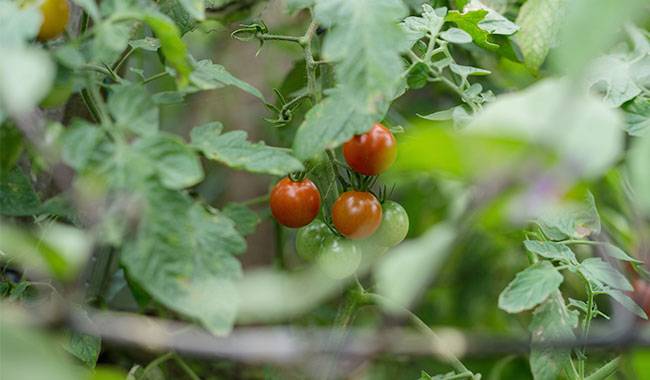
The real scourge of tomato fruit in the greenhouse is root tip Tomatoes rot, which also causes Tomatoes to rot on most of these plants.
At first, faint brown spots suddenly appear on the completely green tomato fruit, and they grow day by day, increasing in diameter as the fruit itself develops.
If you hold such fruit in your hand and press the flesh, then under the skin you can feel the excessive softness, which is not characteristic of tomato fruits – this means that all or most of it has Tomatoes rot and is absolutely unfit for consumption. So you’ll just have to throw them away.
By the way, tomato fruits infected with root tip rot often signal that it is time to send them to the landfill: under a strong infestation, they will fall off the plant long before the fruit is fully ripe.
However, it should be known that tomato fruit root tip rot is not an infectious disease as many people believe; in most cases, the disease occurs due to mistakes in watering tomato plants and at excessively high temperatures.
For example, you arrive at your country house on a weekend day only to find that the soil on the plot where you are growing tomatoes is severely dry and may even have cracked.
What would you do? Of course, you would water the soil under the bush as much as possible to bring it back to normal moisture levels.
This is definitely not the right thing to do: a sudden excess of moisture will rapidly increase the size of the fruit, its top skin will not be able to withstand it and crack, infection will enter it and root tip Tomatoes rot will develop.
Of course, the culprit of tomato root tip Tomatoes rot may not be the gardener, for example, the disease affects plants growing on saline or acidic soils and plants growing on soils with a severe shortage of calcium or, conversely, an excess of elements such as nitrogen.
CONTROL THE ROOT TIP OF TOMATOES TOMATOES ROT
In order to control root tip Tomatoes rot in the initial symptoms, it is necessary to treat the plants several times with a dilution of calcium nitrate at a concentration of 0.4%. In this case, calcium sulfate is also suitable.
Dilute 8 g of calcium sulfate in a bucket of water, sprinkle thoroughly on each plant and repeat the treatment after a week.
Of course, do not forget about crop rotation, plants should not be overgrown and only new varieties with high immunity, i.e. resistance to such diseases, should be used.
COMMON CAUSES OF TOMATOES ROT IN THE GREENHOUSE AND OPEN FIELD TOMATOES
Malaria
A very common cause of tomatoes rot starting on the branches of plants grown in open fields and greenhouses is alternating infection.
This is a disease that is caused when the temperature outside the window remains steadily above zero at 79-88°F (26-31°C) and its causative factor is simply the preference for a lot of heat.
Incidentally, this disease primarily affects tomatoes grown in the southern part of the country but can occur in the central region in some years.
Particularly active in the central part of the United States is the alternate infection that occurs when frequent and very abundant dews fall when there are shallow and long rains, that is, when the air is really soaked with moisture and when it seems to hang in the air.
The first signs of this disease can be found on the completely green tomato fruit. It is only worth looking closely at the stem area as you notice dark brown spots there that are very tiny at first and then get larger.
If it rains during this time and the humidity is high, then hold the fruit in your hand and you can feel as if it is velvety, like a peach.
In fact, this fruit is covered with spores that spread out in a gust of wind when it is ripe, infecting neighboring tomato fruits.
Also, you can notice spots on the bottommost leaves of the tomato plant. The spots on the lower leaves are small at first, then increase literally every day, eventually covering most of the leaves, disrupting photosynthesis and causing leaflets to die and fall off.
Alternaria can be controlled with the same as for phytophthora. However, if you want to get rid of Alternaria on your plot, you must not overgrow the plants, control weeds, fertilize the soil, and use new and modern tomato varieties that have improved immunity and are therefore resistant to many diseases.
Bacterial diseases
Let’s start with bacterial necrosis, or hollow stem necrosis, or necrosis in the middle of the stem.
It all starts with unripe tomato fruit, on which, if you look closely, you can easily see a white web, and on those that have had time to ripen, look closely and you can see a pair of brown rings right where the fruit joins.
If you cut open such a fruit, it will leak a cloudy liquid and, generally speaking, there is not a trace of flesh inside.
Interestingly, if you just touch the infected fruit, it immediately falls off, sometimes the infected fruit even in a light breeze. Of course, such fruits must necessarily be removed from the site and burned so that the infection does not enter the soil.
At the same time, the leaves of diseased plants, usually starting from the youngest ones, that is, those located at the top, actively wither, even sometimes without color change.
If you look closely, you will see brown spots on stems about 8inch (20cm) tall. After only a few days, the stems will rupture and a fluid resembling pus or mucus will appear.
Blackspot
Another disease that causes tomatoes to Tomatoes rot directly on the branches is a black spot, regardless of whether the plants are growing in the open or on a protected ground.
The first signs of the disease can be noticed if you carefully, perhaps using a magnifying glass, consider the very small dark green spots on the leaves.
Of course, it only takes a few days for these spots to become noticeably larger and then turn black – these are mature conidia ready to disperse over long distances and infect neighboring fruits.
On the fruit, you can see at first shiny, seemingly oil-dripping, convex spots, which many people even believe to be a manifestation of scab.
To prevent the appearance of the disease, you should not overplant and use crop rotation. The disease develops most actively during periods of heavy fog and fine rain with the wind when the spores can spread over long distances.
If the bacterial disease has invaded the plot, in most cases only complete removal of the plants from the bed will help.
In the initial stages, plants can be treated with a fungicide, which is sold in tablet form. One tablet is enough for a bucket of water, and the solution – for as many bushes as you can well wet, treat them with a sprayer. The treatment can be repeated after a few weeks.
Important note: fungicide can be applied to the fruit up to three weeks before harvest should be used.
Old leaves, foliage, and fruit should always be removed from the area after harvest.
CONCLUSION
Thus, we dealt with the causes of Tomatoes rot on branches and how to prevent the outbreak of certain diseases, and how to cure the plant.
Every year more and more new agents are added to the fight against these or those diseases, but you need to use them with caution and if possible, still use only folk remedies.




